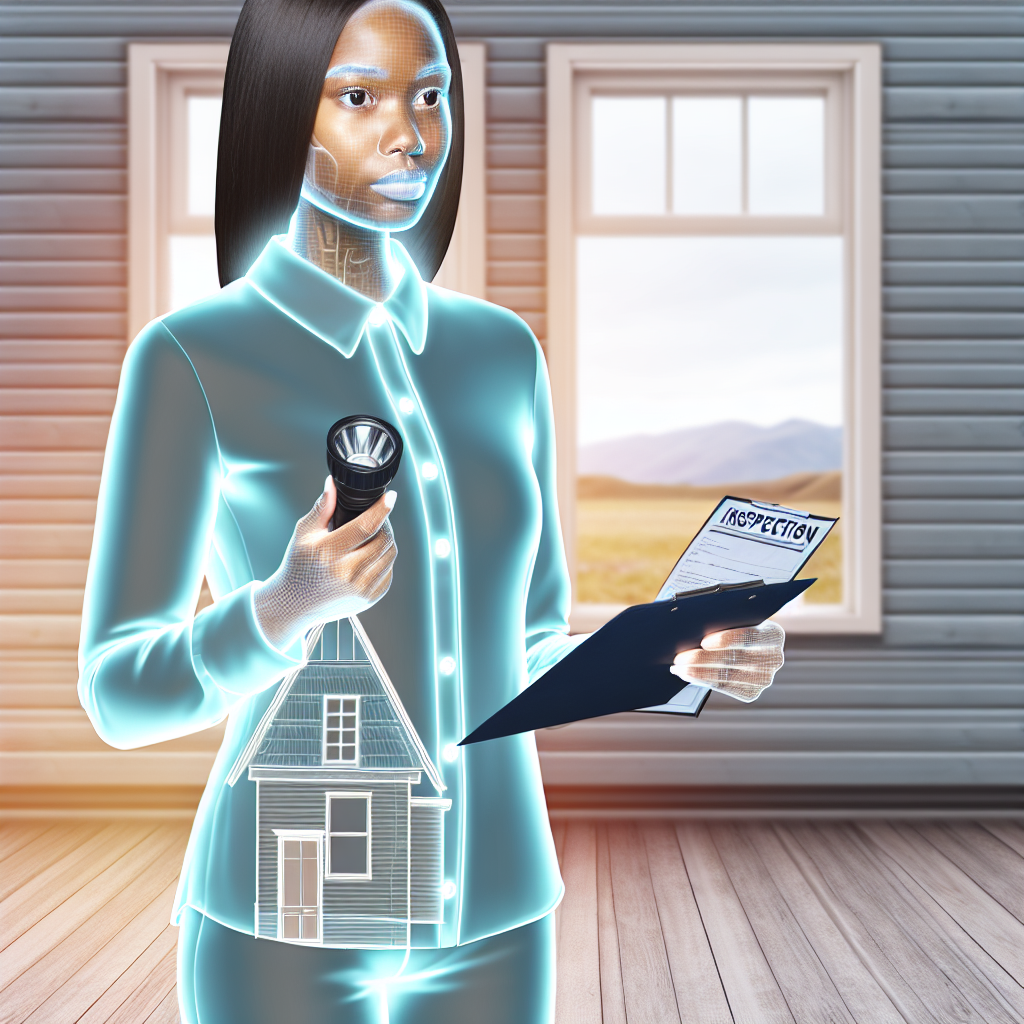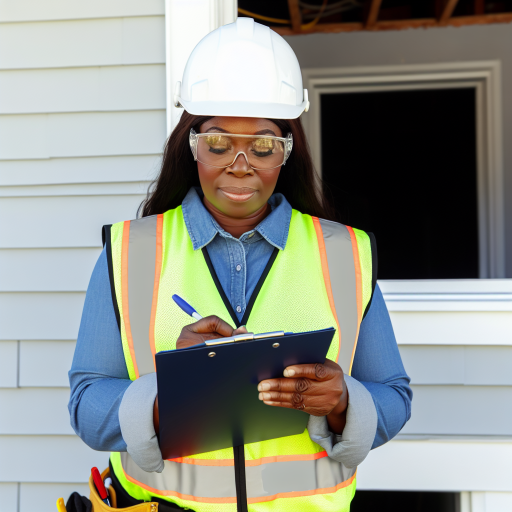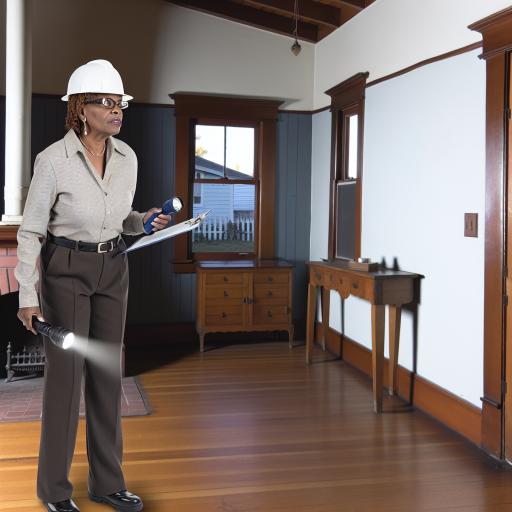Understanding Environmental Safety Standards in Home Inspections
Significance of Environmental Safety
Environmental safety ensures the well-being of occupants in a home.
It prevents health risks linked to hazardous materials or unsanitary conditions.
Moreover, understanding these standards promotes sustainable living practices.
Key Regulatory Guidelines
Various regulations guide environmental safety practices in home inspections.
The Environmental Protection Agency (EPA) provides essential safety guidelines.
State and local authorities also enforce specific environmental regulations.
Adhering to these regulations is crucial for compliance and safety.
Common Hazards Identified in Home Inspections
Several hazards can pose environmental risks within homes.
- Mold and mildew can cause respiratory problems.
- Asbestos exposure can lead to severe health issues.
- Lead paint remains a concern, especially in older homes.
- Pesticides and chemicals may linger in indoor air and surfaces.
Assessment Procedures for Environmental Safety
A thorough inspection includes identifying potential hazards.
Inspectors often use specialized equipment for effective assessments.
Air quality tests can reveal hidden pollutants within the home.
Additionally, sample collections aid in analyzing hazardous substance levels.
Remediation Strategies
Proper remediation techniques help mitigate environmental risks.
For instance, professional mold removal can improve indoor air quality.
Additionally, encapsulating asbestos ensures safety during home renovations.
Regular maintenance and inspections are vital to prevent recurring issues.
Promoting Environmental Awareness
Raising awareness about environmental safety is essential for homeowners.
Educational programs can help individuals recognize hazards early.
Furthermore, community initiatives can support sustainable housing practices.
Engaging homeowners in safety training fosters a proactive approach.
Identifying Common Environmental Hazards in Residential Properties
Types of Environmental Hazards
Residential properties can harbor various environmental hazards.
Common hazards include lead, asbestos, mold, and radon.
Each of these poses unique risks to health and safety.
Lead Exposure
Lead-based paint is a significant concern in older homes.
Housing built before 1978 often contains this hazardous material.
Lead dust can accumulate and become airborne, posing risks to occupants.
Tests should identify lead presence in paint and dust samples.
Asbestos Presence
Asbestos may be found in insulation, flooring, and roofing materials.
It was commonly used in construction prior to the 1980s.
Disturbing asbestos can release fibers that are harmful when inhaled.
Professional testing is crucial for homes suspected of containing asbestos.
Mold Growth
Mold thrives in damp and poorly ventilated areas.
Common sources of moisture include leaks, floods, and high humidity.
Exposure to mold can lead to respiratory issues and allergic reactions.
Regular inspections are important to catch mold growth early.
Radon Gas
Radon is a colorless, odorless gas that can seep into homes from the ground.
It is the second leading cause of lung cancer in the United States.
Homeowners should conduct radon testing, especially in high-risk areas.
Identifying Other Hazards
In addition to the hazards mentioned, other issues can arise.
Improper chemical storage can pose toxic risks to occupants.
Additionally, pests like termites and rodents can create unsanitary conditions.
Regular inspections can help detect these threats early.
Creating a Comprehensive Home Inspection Checklist for Environmental Safety
Importance of Environmental Safety in Home Inspections
Environmental safety plays a crucial role in residential integrity.
It protects occupants from potential health hazards.
Ensuring a safe home environment enhances quality of life.
Furthermore, it contributes to sustainable living practices.
Key Components of an Environmental Safety Checklist
A comprehensive checklist covers various environmental factors.
Start with assessing air quality within the home.
Next, evaluate potential water contamination sources.
Inspect for hazardous materials like asbestos and lead.
Additionally, consider the surrounding area for safety risks.
Air Quality Evaluation
Testing indoor air quality is essential.
Use specialized devices to detect pollutants.
Look for signs of mold or excessive humidity.
Ensure proper ventilation throughout living spaces.
Assessing Water Sources
Check the quality of water supply systems.
Conduct tests for contaminants like bacteria and chemicals.
Inspect plumbing for leaks that might lead to mold growth.
Review local water safety reports for added information.
Hazardous Materials Inspection
Identify any presence of lead-based paints in older homes.
Check for asbestos in insulation and pipe wraps.
Evaluate the condition of any hazardous storage areas.
Seek professional assistance for contamination removal.
Steps for Implementing the Checklist
Implementing an effective checklist requires careful planning.
Begin by gathering necessary tools and resources.
Engage qualified professionals where needed.
Keep accurate records of inspections and findings.
Gathering Tools and Resources
Ensure you have thermometers, moisture meters, and testing kits.
Use templates for consistency in documentation.
Research local regulations regarding environmental safety.
Engaging Qualified Professionals
Consult environmental specialists for thorough inspections.
Consider hiring certified home inspectors with expertise.
Get recommendations from trusted connections or online reviews.
Documenting Findings
Maintain a detailed log of all inspections conducted.
Include photographs for visual evidence of issues.
Summarize findings in an accessible format.
Regularly update the checklist based on new information.
Regularly Updating the Checklist
Ensure the checklist evolves with changing conditions.
Regular updates improve the relevance of safety measures.
Stay informed on new environmental laws and safety standards.
Review the checklist after every inspection for improvements.
Gain More Insights: How to Negotiate with Sellers for the Best Deal on a Home
Best Practices for Inspecting Indoor Air Quality and Ventilation Systems
Understanding Indoor Air Quality
Indoor air quality significantly impacts health and comfort.
It involves monitoring pollutants and allergens inside homes.
Regular inspections ensure that the air remains clean and safe.
Assessing Ventilation Systems
Evaluate the functioning of ventilation systems regularly.
Check for proper airflow in all rooms.
Inspect ducts for dust buildup and blockages.
Ensure that exhaust fans operate effectively.
Replace filters in heating and cooling systems routinely.
Identifying Common Air Quality Issues
Mold and mildew can thrive in damp areas.
Address leaks or water damage immediately to prevent growth.
Common indoor pollutants include volatile organic compounds.
These compounds can originate from household products.
Ensure adequate ventilation when using such products.
Implementing Effective Strategies
Use air purifiers to reduce allergens and pollutants.
Increase natural ventilation by opening windows regularly.
Consider using plants known for improving air quality.
Monitor humidity levels to maintain a healthy environment.
Regular Inspections and Maintenance
Schedule periodic inspections of indoor systems.
Engage professionals for thorough assessments and repairs.
Keep a detailed log of maintenance activities and findings.
Share these records with future inspectors to ensure safety.
Uncover the Details: Home Inspection Checklist For Ensuring Structural Integrity Of Homes
Evaluating Moisture and Water Intrusion Risks in Home Inspections
Identifying Common Moisture Problems
Start by inspecting basements and crawl spaces.
Look for signs of dampness or mold growth.
Next, check around windows and doors for water damage.
Pay attention to bathrooms and kitchens where leaks often occur.
Additionally, examine the roof for missing shingles or leaks.
Understanding the Sources of Water Intrusion
Water intrusion can occur from various sources.
Rainwater pooling around the foundation is a common issue.
Improperly installed gutters can direct water toward the house.
Additionally, landscaping that slopes toward the foundation can contribute.
Assessing Interior Humidity Levels
High indoor humidity can lead to mold growth.
Use a hygrometer to measure humidity levels in living spaces.
A level above 60% indicates a moisture problem.
Consider using a dehumidifier in damp areas.
Inspecting Drainage Systems
Proper drainage is crucial for preventing water damage.
Inspect downspouts to ensure they direct water away from the home.
Check that sump pumps are functional and clear of debris.
Additionally, ensure that drains are not clogged or blocked.
Looking for Structural Issues
Evaluate the foundation for cracks or settling signs.
Cracks can indicate water intrusion and require immediate attention.
Inspect the walls and ceilings for any signs of water stains.
Additionally, check for peeling paint or wallpaper, which can indicate dampness.
Recommended Preventive Measures
Install and maintain gutters to divert water effectively.
Ensure proper landscaping to protect the foundation.
Consider waterproofing basements and crawl spaces.
Regular maintenance can help prevent future problems.
See Related Content: Home Inspection Checklist For Understanding Environmental Hazards

Assessing the Presence of Hazardous Materials
Identifying Lead-Based Paint
Begin by inspecting the interior and exterior surfaces of your home.
Look for peeling or chipping paint, especially in homes built before 1978.
This is crucial because lead-based paint poses significant health risks.
If you suspect lead paint, consider hiring a professional for testing.
They can provide accurate results and recommendations for remediation.
Detecting Asbestos
Check areas such as insulation, flooring, and roofing materials.
Asbestos can be found in homes built before the 1980s.
It is essential to handle suspected materials with care.
If you suspect asbestos, do not disturb it; instead, seek professional help.
Proper testing will confirm its presence and safety guidelines will follow.
Recognizing Radon Risks
Radon is an invisible, odorless gas that can seep into homes.
It is produced by the decay of uranium in the soil.
Testing for radon is straightforward and highly recommended.
Use a test kit available at hardware stores or hire professionals.
If elevated levels are detected, consider installing a radon mitigation system.
Inspecting for Mold
Mold thrives in damp, humid areas of the home.
Look for discolorations on walls, ceilings, or floors.
Pay particular attention to bathrooms, basements, and kitchens.
If mold is detected, address the moisture issue first.
Next, remove the mold safely or hire a professional if needed.
Understanding Chemical Storage
Check for chemicals stored in garages, basements, or sheds.
These can include cleaning supplies, pesticides, and paints.
Ensure these substances are stored safely and securely.
Follow local regulations for disposal of hazardous waste products.
Doing so minimizes environmental contamination.
Addressing Electrical Hazards
Inspect all electrical systems and wiring throughout the home.
Look for frayed wires, exposed connections, or outdated systems.
Consider hiring a licensed electrician for a comprehensive inspection.
They can identify potential fire hazards and recommend upgrades.
Recognizing Environmental Impact
Consider the overall environmental impact of your home.
Assess energy consumption and water usage.
Look into sustainable practices, such as using energy-efficient appliances.
Small changes can significantly reduce your home’s environmental footprint.
Prioritize sustainability while maintaining home safety.
Discover More: Pros And Cons Of Buying A Fixer-Upper For First-Time Homebuyers
Conducting External Environment Assessments
Evaluating Soil Quality
A thorough soil evaluation starts with visual inspection.
Check for signs of erosion and compaction.
Next, conduct a soil test to measure pH and nutrient levels.
Utilize kits from reliable suppliers like Soil Savvy.
Furthermore, analyze texture by feeling the soil in your hands.
Consider how various soil types affect plant growth.
Assessing Vegetation Health
Inspect local vegetation for signs of disease and pests.
Check leaf color and texture for indications of stress.
Look for dead or dying trees; they may pose risks.
Additionally, evaluate the diversity of plant species present.
Diverse plant life promotes a healthy ecosystem.
Consider using resources from organizations like the Arbor Day Foundation.
Investigating Water Sources
Evaluate water sources such as rivers, lakes, and groundwater.
Test water quality for pollutants and contaminants.
Ensure proper drainage to prevent flooding in your area.
Monitor any changes in water levels over time.
Additionally, observe the water flow to identify potential hazards.
Engage local environmental agencies for detailed assessments.
Understanding Wildlife Interactions
Observe local wildlife species and their habitats.
Ensure that human activities do not disrupt animal movement.
Check for any signs of habitat loss or degradation.
Encourage wildlife-friendly practices in landscaping.
Moreover, document frequent wildlife sightings for further analysis.
Collaborate with wildlife conservation groups for best practices.
Identifying Potential Hazards
Look for environmental hazards, including chemical spills.
Assess nearby industrial activities that may impact safety.
Evaluate the presence of hazardous waste sites in the vicinity.
Report any violations to local authorities promptly.
Always prioritize safety in your evaluations and recommendations.
Utilizing Technology and Tools for Enhanced Environmental Safety Inspections
Importance of Modern Tools
Modern technology enhances the efficiency of environmental safety inspections.
Advanced tools can identify issues faster than traditional means.
This leads to safer homes and communities.
Types of Technology to Consider
Various technologies are available for thorough inspections.
- Infrared cameras reveal insulation problems and heat loss.
- Moisture meters help detect hidden leaks and dampness.
- Air quality monitors assess levels of pollutants indoors.
Each tool serves a critical role in ensuring safety.
Integrating Software Solutions
Software applications streamline the inspection process.
They allow inspectors to record and manage data effectively.
Investing in these solutions enhances report generation and analysis.
Training and Expertise
Proper training maximizes the benefits of technology.
Inspectors should understand how to use each tool effectively.
Continuous education keeps them updated on new technologies.
Collaboration with Professionals
Working with environmental experts enriches the inspection process.
Collaboration ensures a comprehensive approach to safety.
Consultants can offer valuable insights and recommendations.
Regular Updates and Maintenance
Regular updates to technology tools keep them effective.
Maintenance of equipment prevents potential failures during inspections.
Staying proactive protects both inspectors and homeowners.




